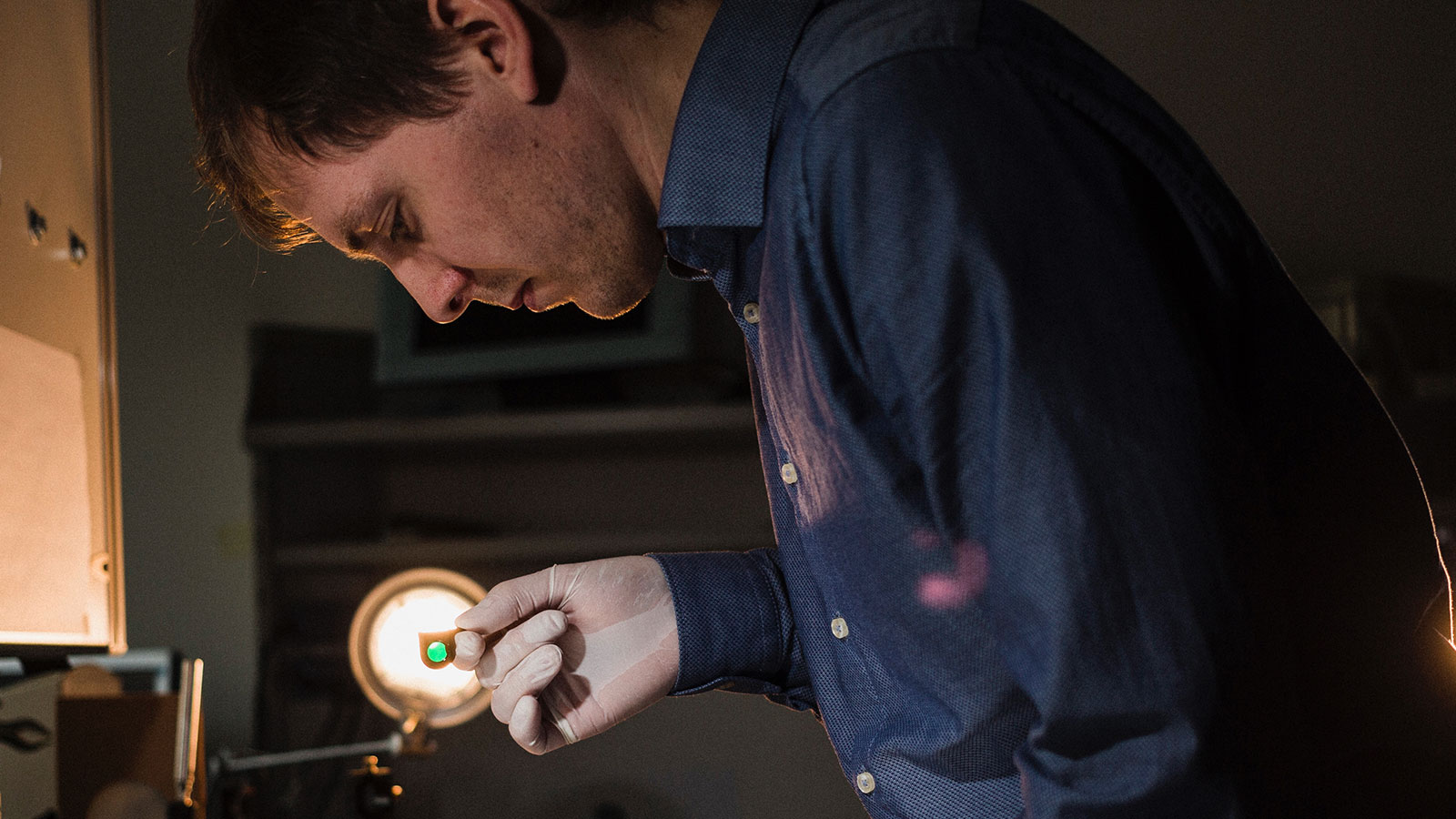- Home
- Technology Groups
- Competence Center for Micro- and Nanotechnologies
- Research results
- With the Magic of Light: In Search of the Molecular Signature
With the Magic of Light: In Search of the Molecular Signature

25.08.2023
Spectroscopy offers enormous potential for medical diagnostics to quickly and reliably determine the unique molecular fingerprint of biological samples and thus identify infectious agents, as an example. Optical gratings form the technological heart of spectroscopic systems, and help to optimally fan the light spectrally.
Conventional spectroscopy systems are generally unsuitable for portable as well as point-of-care applications due to their size. Therefore, Leibniz IPHT has been working intensively since the early 2000s to miniaturize commercially available spectroscopic devices and make them universally usable for laboratory diagnostics.
To achieve this goal, scientists from three research departments of the institute worked together on a compact spectroscopic design as part of an internal innovation project. The research activities were aimed at developing a small, lightweight and mobile grating spectrometer that would stand up to existing instrument concepts but would not be inferior to them in terms of spectral resolution.
A central element of such a small spectrometer is the optical grating. Installed inside a spectrometer, these diffractive optical elements (DOE) ensure that the light is split into its spectral components by diffraction. Via another optical unit, the light separated into different wavelengths is imaged onto a sensitive detector, which converts the generated spectrum into detectable signals. These can then be used, for example, to detect infectious agents.
Research into such specialized grating structures and their sophisticated technological fabrication processes was successfully advanced in the innovation project. By using wafer-scale electron beam lithography and plasma-based deep etching processes, sophisticated and highly efficient optical grating structures and geometries were made, which opened up new possibilities for spectrometer design. The thus built oval-shaped optical gratings are about the size of a 5-cent coin and, with their special architecture of curved grating lines and a specially structured grating profile, ensure extremely efficient light diffraction. They make it possible to reduce the complexity of the optical components required in a spectrometer and thus to make it significantly smaller despite its high resolution.
The know-how gained enabled the researchers to develop Raman2Go, a miniaturized and portable spectroscopic setup. As an easy-to-use complete solution, Raman2Go is suitable for spectroscopic investigations in mobile use as well as for applications outside specialized laboratories.
Work is currently underway on the next generation of the mobile spectroscopy system Raman2Go, which is being further developed into a marketable product at the newly established Leibniz Center for Photonics in Infection Research (LPI). The aim is to provide researchers with a fast and simple tool when assessing biological samples and near-patient infection diagnostics.
Henry John, engineer in the Sensor Research and Systems Integration Group at Leibniz IPHT, places the optical gratings in the Raman2Go system with great sensitivity.
©Sven Döring


